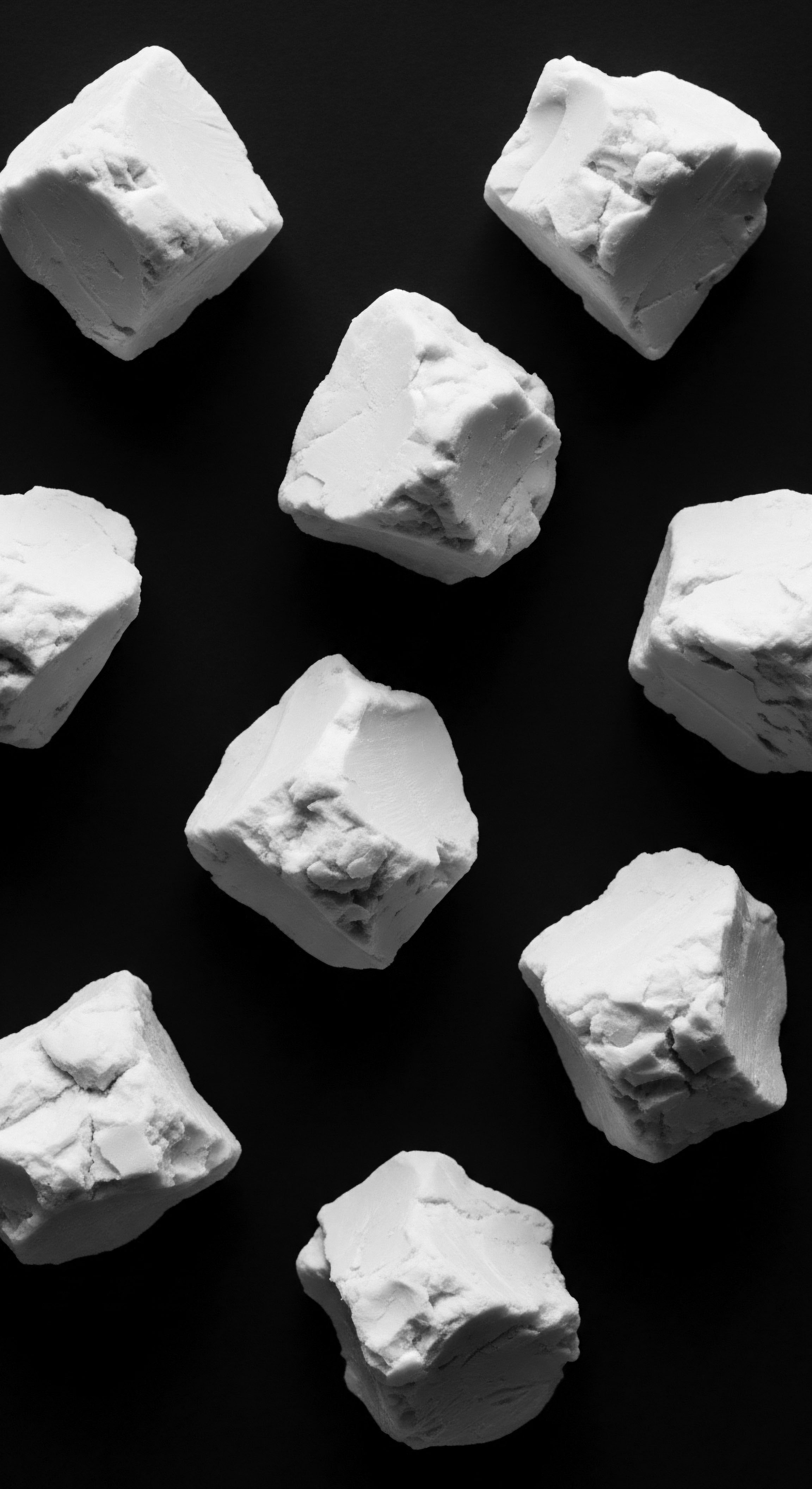
Roots
To stand before the mirror, contemplating each intricate coil and resilient bend of textured hair, is to connect with a lineage stretching back through the mists of time. It is a dialogue with echoes from the source, a quiet conversation with those who walked before us, whose wisdom shaped the earliest understandings of hair care. For those of us with textured hair, this journey into antiquity is far more than a historical exercise; it is an affirmation of our enduring heritage, a testament to the ingenuity and grace that has always characterized our traditions.
How did our ancestors, without the myriad concoctions lining modern shelves, cleanse these magnificent crowns? The answer lies not in a single formula but in a profound communion with the earth, a deep respect for natural properties, and a shared understanding of hair as a living, sacred extension of self and spirit.

Unraveling Hair’s Ancient Architecture
The very structure of textured hair, with its elliptical shaft and characteristic curl patterns, holds secrets to its ancient care. This hair, often exhibiting a fascinating dance of tight coils and spirals, possesses inherent qualities that informed the cleansing practices of old. Its structural design, while offering splendid volume and protective styling potential, also rendered it more prone to dryness and tangles compared to straight or wavy hair types. This fundamental understanding guided ancestral communities toward methods that prioritized moisture retention and gentle handling.
Ancient wisdom concerning textured hair care is inextricably linked to the unique biological architecture of the hair strand.
Consider the protective adaptation of Afro-textured hair. Evolutionary biologists theorize this hair type developed as an adaptation to shield the scalp from intense ultraviolet radiation in regions of high sun exposure. Its spiraled formation also permits air to circulate, keeping the scalp cool. This natural shielding capability meant that excessive stripping of natural oils, which could compromise the hair’s protective barrier, was counterproductive to its inherent design and the health of the scalp.
Our ancestors were keen observers of the natural world, discerning the cleansing and conditioning properties of plants, clays, and oils long before scientific laboratories could articulate their molecular benefits. The practices they cultivated were, at their heart, a profound interaction with elemental biology, a recognition that the earth held the very solutions for their hair’s wellness.

What Did Early Civilizations Use to Cleanse Hair?
Across continents, the ingenuity of ancient cultures in cleaning textured hair without harsh chemicals is remarkable. Their methods were often rooted in the local flora and available resources, reflecting a deep, symbiotic relationship with their immediate environment. The cleansing agents were typically gentle, aiming to remove impurities without stripping the hair’s vital moisture, a critical consideration for coiled and curly textures.
In ancient Egypt, where elaborate hairstyles and wigs were symbols of status and vitality, cleansing was a ritualistic practice. Egyptians used a combination of citrus juice and water to clean hair, allowing the citric acid to dissolve fatty oils and seal the hair follicle. They also employed clay as a natural cleanser, gently lifting dirt and impurities while preserving the hair’s natural moisture.
Castor oil, prized for its moisturizing properties, was also a staple, often mixed with honey and herbs to create conditioning masks. This holistic approach ensured both cleanliness and nourishment.
The earliest known origins of hair washing trace back to the Indian subcontinent and the Bronze Age Indus Civilization around the 14th century BC. Here, herbal pastes derived from boiled plants like Reetha (Indian soapberry), Amla (gooseberry), and Shikakai (acacia) were crafted not only to cleanse but also to nourish the scalp and condition the hair. These Ayurvedic traditions, thousands of years old, recognized the interconnectedness of scalp health and hair vitality, providing a foundation for practices still observed today.
North Africa also brought forth its unique contribution with Rhassoul Clay, derived from the Arabic word “ghassala,” meaning “to wash.” This mineral-rich clay was used for hair cleansing, known for its ability to draw out impurities and toxins without stripping the hair’s natural oils. Such practices speak to a universal wisdom, recognizing that true cleanliness meant balance, not depletion.
The indigenous peoples of the Americas, too, had their own rich traditions. Native American tribes used yucca root as a natural shampoo. When crushed and mixed with water, Yucca Root produces a soapy lather due to its saponin content, effectively cleaning and nourishing the hair. This highlights a reverence for the land and its offerings, practices steeped in sustainability and respect for the environment.
| Cleansing Agent Citrus Juice & Water |
| Primary Region Ancient Egypt |
| Key Properties for Hair Heritage Removes oil, seals follicle, natural shine. |
| Cleansing Agent Clay (e.g. Rhassoul) |
| Primary Region North Africa, Ancient Egypt |
| Key Properties for Hair Heritage Gently cleanses, draws impurities, preserves natural oils. |
| Cleansing Agent Herbal Pastes (Amla, Shikakai) |
| Primary Region Ancient India (Ayurveda) |
| Key Properties for Hair Heritage Cleanses, nourishes scalp, conditions hair. |
| Cleansing Agent Yucca Root |
| Primary Region Native Americas |
| Key Properties for Hair Heritage Natural saponins for lather, cleanses without stripping, nourishes. |
| Cleansing Agent Plant Ash Soaps |
| Primary Region West Africa (African Black Soap) |
| Key Properties for Hair Heritage Alkaline cleansing, rich in vitamins and minerals, moisturizing. |
| Cleansing Agent These ancestral ingredients speak to a profound wisdom, carefully selected to respect the inherent qualities of textured hair. |

Ritual
To approach hair cleansing in ancient cultures was to step into a ritual, a sacred practice interwoven with daily life, community, and the very expression of identity. These were not perfunctory acts but deliberate engagements that honored the hair’s significance. For communities with textured hair, where hair communicated profound social, spiritual, and familial meanings, cleaning was integral to maintaining its health, beauty, and symbolic power. It was a rhythmic dance of care, preparing the strands for the elaborate styles that spoke volumes about status, age, and lineage.
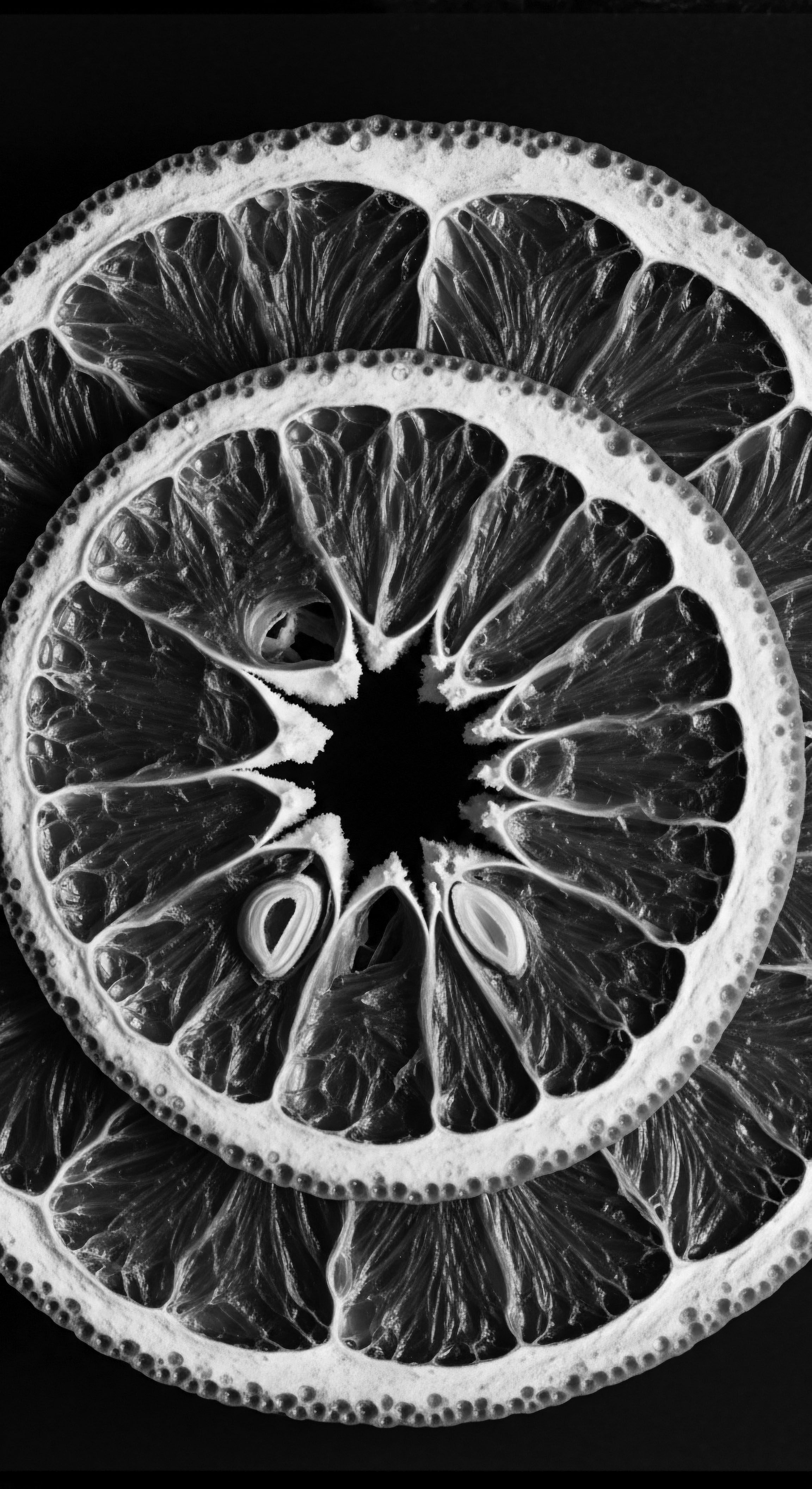
How Did Cleansing Inform Traditional Hair Styling Practices?
The preparation of textured hair through cleansing was often a precursor to intricate styling, a foundation for the artistry that followed. In pre-colonial Africa, hair styling was a deep form of communication, indicating geographic origin, marital status, age, ethnic identity, religion, wealth, and rank. The cleansing process was geared toward ensuring the hair was healthy, clean, and pliable enough to be sculpted into these significant forms.
Hair groomers possessed unique skills, creating designs that met cultural standards, often involving hours, even days, of work. This communal grooming activity strengthened social bonds and familial ties. The washing, combing, oiling, and braiding or twisting were all interconnected, each step preparing the hair for its next expression. For example, the use of natural butters, herbs, and powders assisted with moisture retention, making the hair more manageable for intricate styling like cornrows and threading.
The practice of detangling, a time-honored aspect of textured hair care, was certainly part of this cleansing ritual. While not widely documented in formal literature, anecdotal evidence from those with Afro-textured hair suggests methods such as “finger detangling” or using wide-tooth combs were effective, especially when hair was wet and softened by cleansing agents and oils.
Hair cleansing in antiquity served as a vital preparatory step for the intricate styles that communicated identity and lineage.
Consider the resilience of Black hair traditions during the transatlantic slave trade. Stripped of their ancestral lands and tools, enslaved Africans were forced to innovate, using available materials like cooking oil, animal fats, and butter to moisturize and manage their hair. Even in the face of brutal dehumanization, where slave traders often shaved heads, the spirit of hair care persisted, with methods adapted to new, harsh realities.
Braiding, in particular, became a functional way to protect delicate Afro-textured hair and even a means of communication, with specific patterns rumored to serve as maps to freedom. These examples underscore that cleansing was not merely about hygiene; it was about preserving identity, protecting against environmental damage, and maintaining the structural integrity necessary for styles that carried profound meaning.
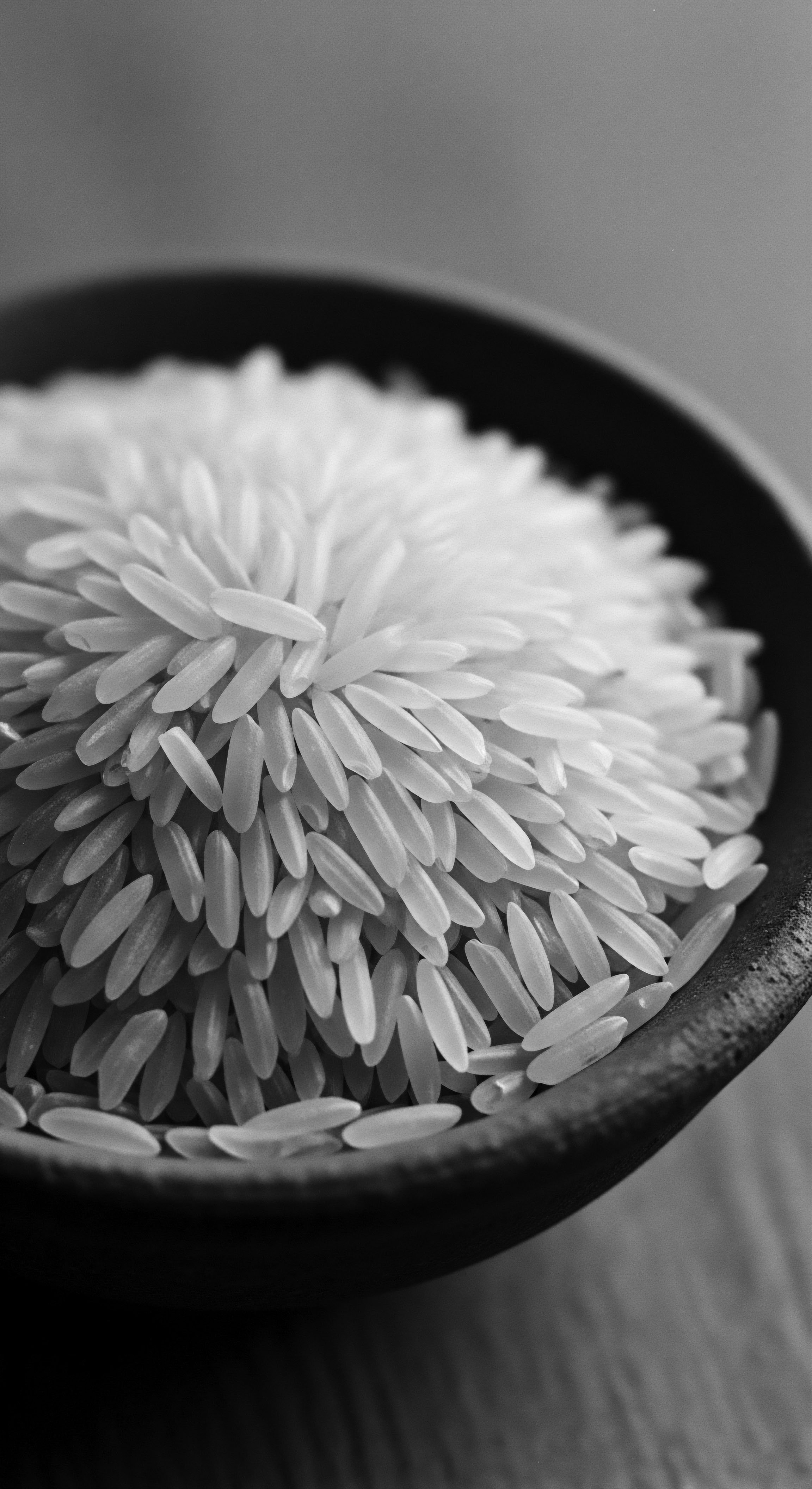
The Role of Natural Ingredients in Ancient Cleansing and Conditioning
Ancient cultures understood that cleansing was not a solitary act but a holistic process that included conditioning and nourishment. The ingredients chosen for washing often possessed conditioning properties, blurring the lines between a cleanser and a treatment. This approach is particularly beneficial for textured hair, which naturally requires more moisture.
Traditional African Black Soap, for instance, a cherished beauty secret from West Africa, stands as a testament to this integrated approach. Made from plant ash, palm oil, shea butter, and coconut oil, it acts as a cleanser while simultaneously offering moisturizing and nourishing benefits due to its richness in vitamins A and E and antioxidants. The production process itself, often communal, encapsulates the eco-consciousness of African communities, making the most of their natural resources.
Other traditional ingredients, like Chebe Powder from Chad, were known not only for increasing hair thickness and retaining moisture between washes but also for balancing scalp pH and possessing anti-inflammatory properties. This speaks to a sophisticated understanding of hair and scalp health, where cleansing contributed to a balanced ecosystem rather than disrupting it.
- Shea Butter ❉ Widely used in African tribes, extracted from shea nuts, applied for moisturizing and protecting hair from harsh environmental conditions, leaving it soft and manageable.
- Coconut Oil ❉ A staple in India, Japan, and China for conditioning hair, controlling frizz, and sealing moisture.
- Aloe Vera ❉ Popular in Native American and Latin American traditions, used as a natural conditioner to promote growth and reduce scalp inflammation.
- Argan Oil ❉ From Morocco, used by Berber women for skin and hair care, valued for its proven benefits.
The integration of these natural elements into cleansing and conditioning rituals created a legacy of mindful hair care rooted in nature, a tradition that continues to shape modern hair care practices.
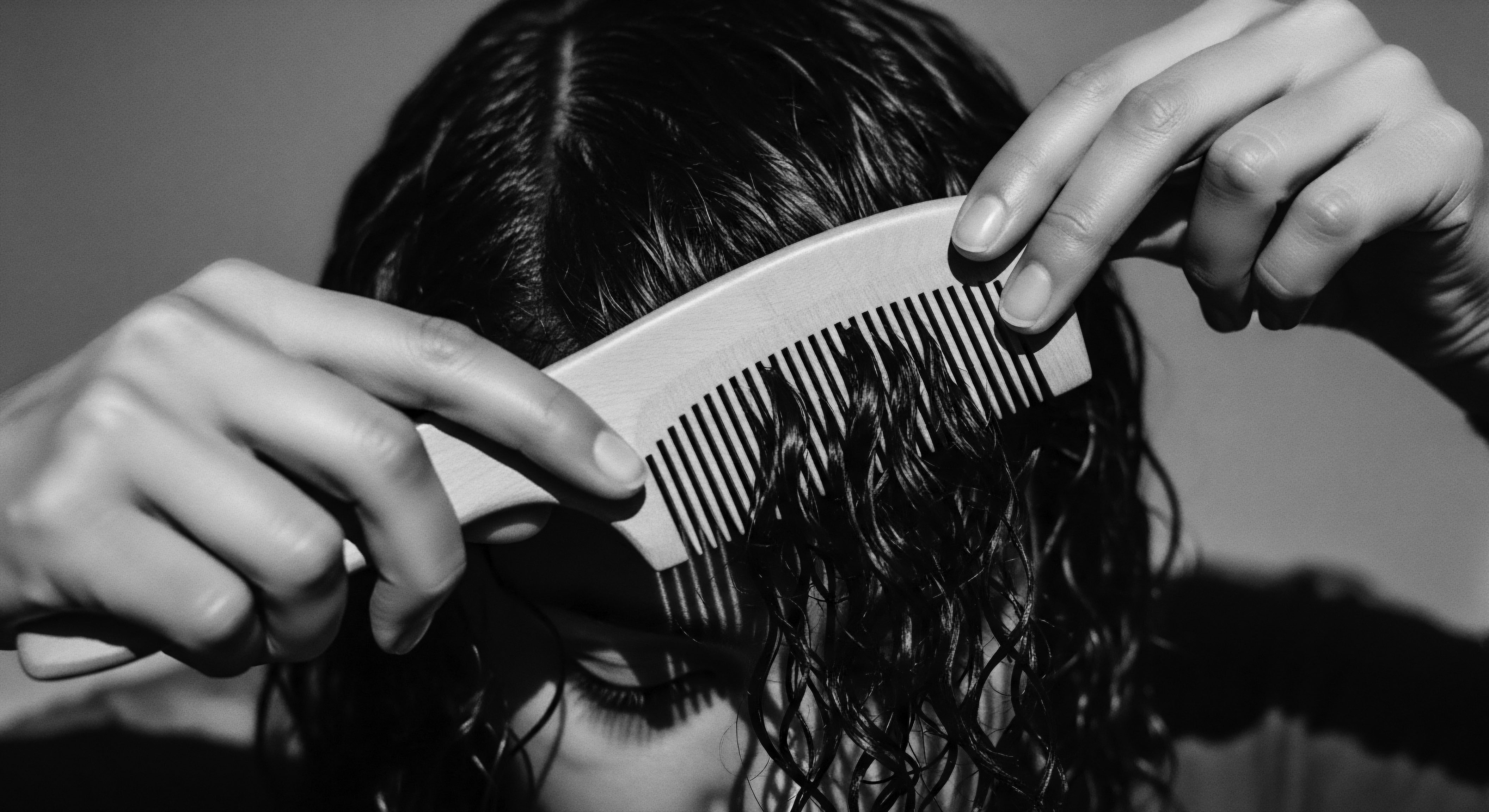
Relay
The ancestral practices of cleaning textured hair, born of deep observation and an intimate connection with the earth, echo through time, informing our contemporary understanding and care. These traditional methods, far from being relics of a distant past, represent a profound, integrated science validated by modern discovery. The wisdom passed down through generations, often through oral tradition and practical demonstration, forms a living archive, continuously revealing its efficacy for textured hair heritage.

Validating Ancestral Wisdom Through Modern Science
The scientific lens, when applied with reverence for heritage, often serves to illuminate the ‘why’ behind traditional practices. The very compounds within the plants, clays, and oils our ancestors utilized possessed chemical properties perfectly suited for cleansing and nurturing textured hair. This is where the wisdom of the holistic practitioner and the precision of the scientist find common ground.
For instance, the saponins present in Yucca Root, used by Native Americans for cleansing, are natural surfactants that create a lather to lift dirt without harsh stripping, aligning with the modern understanding of gentle cleansing for delicate textures. Similarly, the benefits of ingredients like Amla, Shikakai, and Neem, outlined in ancient Ayurvedic texts, are now recognized for their antimicrobial properties, nourishing effects, and detoxifying capabilities. The sustained use of these natural elements in modern formulations underscores Ayurveda’s enduring legacy.
Moreover, the structure of Afro-textured hair, with its unique elliptical shaft and propensity for dryness due to its curl pattern, benefits immensely from the moisturizing and protective approach inherent in ancestral cleansing. Modern dermatological recommendations for textured hair often advise against frequent washing with harsh detergents, instead focusing on moisture retention and gentle detangling. This validates the ancient foresight that favored cleansing agents that preserved the hair’s natural oils and integrity.
The efficacy of ancient textured hair cleansing practices is frequently confirmed by contemporary scientific understanding of natural ingredients and hair biology.
One compelling historical example that powerfully illuminates this connection to textured hair heritage and ancestral practices is the traditional hair care of the Himba Tribe in Namibia. The Himba are renowned for coating their thick, lustrous hair with an “otjize” paste, a mixture of red ochre, butterfat, and aromatic resin. While primarily a protective and aesthetic practice, this blend also contributed to cleansing by absorbing impurities and creating a barrier against environmental elements. The butterfat, rich in lipids, acted as a natural emollient, keeping the hair moisturized and pliable, which is crucial for tightly coiled textures that are susceptible to dryness.
This practice, often involving communal application, also speaks to the social dimension of hair care, a ritualized act of bonding and identity affirmation. The deep, conditioning aspects of the Himba’s ritual, while not a “shampoo” in the modern sense, served a multifaceted cleansing and conditioning purpose that resonates with modern principles of low-lather, high-moisture care for textured hair. (Dabiri, 2020, p. 195). This practice provides a compelling example of an integrated approach to hair care that defies simple categorization, serving both aesthetic and hygienic purposes, all deeply rooted in cultural heritage.
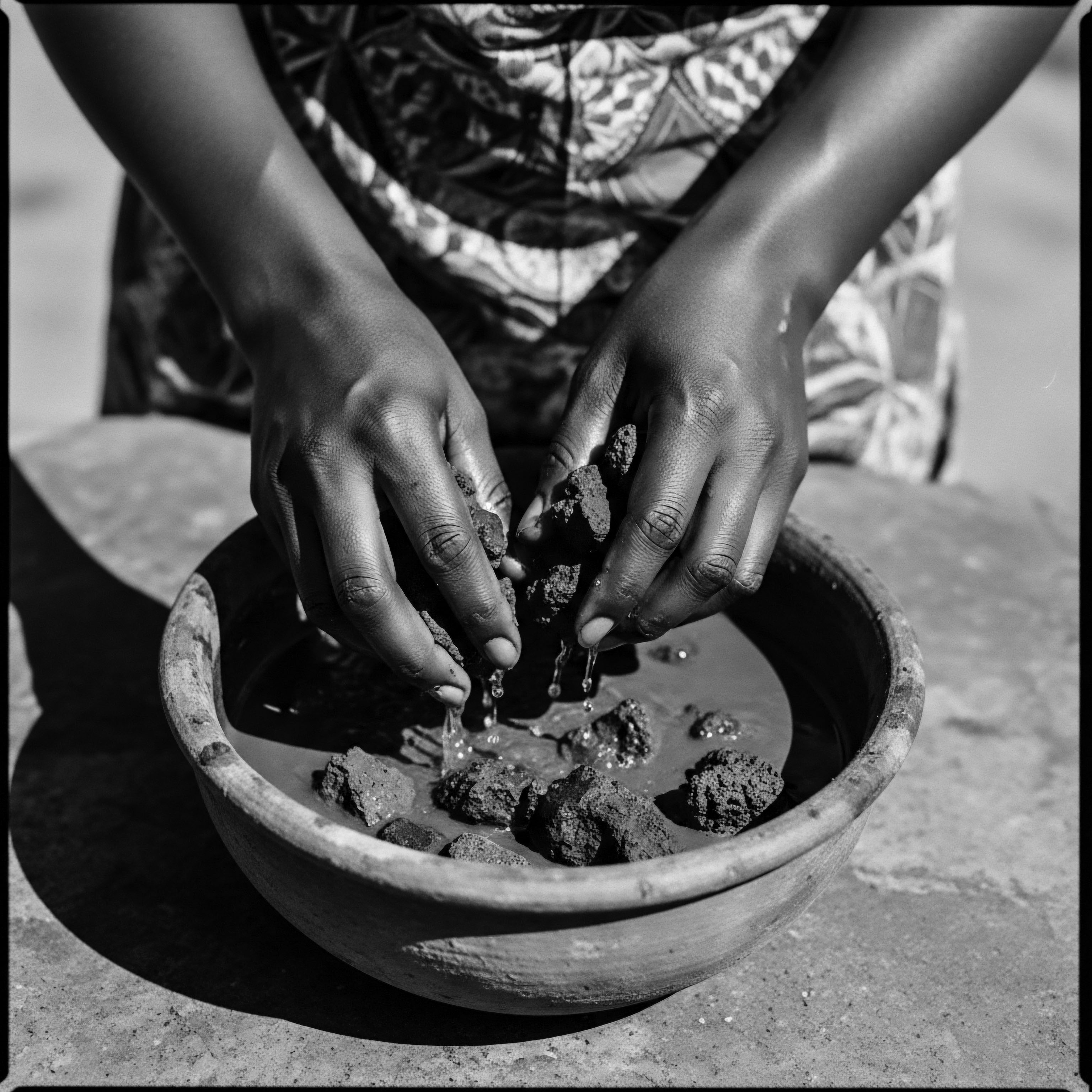
How Did Ancient Hair Care Practices Influence Our Present Understandings?
The historical journey of textured hair care, particularly cleansing, offers profound insights into our present-day routines. It demonstrates a continuity of wisdom, even as the tools and contexts have transformed. The principles of gentleness, nourishment, and natural sourcing remain deeply relevant.
The widespread embrace of “natural hair” movements today is, in many ways, a reclamation of these ancient ancestral practices. Consumers now seek sulfate-free shampoos, co-wash products (cleansing conditioners), deep treatments, and hair oils, echoing the leave-on products of oils, butters, milks, and resins traditionally used in Africa. The emphasis on understanding one’s curl pattern, promoting hair growth, and overcoming issues like dryness and breakage finds its origins in millennia of observation and adaptation within textured hair communities.
The history of African hair care, in particular, has been one of resilience and adaptation, especially in the face of forced cultural erasure. The imposition of Eurocentric beauty standards during and after slavery led many Black individuals to use harsh chemicals and heat to straighten their hair. However, the continued strength of ancestral memory and the resurgence of natural hair movements since the 1960s have empowered a return to practices that celebrate the hair’s inherent texture. This shift is a profound cultural statement, a reclaiming of heritage that sees healthy, natural texture as a source of pride.
The commercial market is now responding to this demand, with a growing segment of hair care products specifically designed for the unique needs of Afro-textured hair. This market evolution, while sometimes presenting its own complexities regarding ownership and appropriation, undeniably stems from the foundational wisdom of ancient, traditional hair care practices.
| Traditional Approach (Ancient) Used natural clays, plant ashes, and herbal infusions. |
| Contemporary Parallel (Modern) Favors sulfate-free cleansers, low-poo, and no-poo methods. |
| Traditional Approach (Ancient) Cleansing often integrated with conditioning and oiling. |
| Contemporary Parallel (Modern) Emphasizes co-washing, deep conditioning, and pre-poo oil treatments. |
| Traditional Approach (Ancient) Practices rooted in local botanical knowledge and community. |
| Contemporary Parallel (Modern) Increased demand for ethnobotanical ingredients and sustainable sourcing. |
| Traditional Approach (Ancient) Focus on preserving hair's natural moisture and protective qualities. |
| Contemporary Parallel (Modern) Prioritizes moisture retention to combat dryness and breakage. |
| Traditional Approach (Ancient) The enduring principles of ancient textured hair care continue to shape and inspire modern wellness routines. |
The journey from ancient riverbanks and communal cleansing rituals to modern wash days is not a linear progression but a spiral, returning to the core truths understood by our ancestors. The reverence for hair, the understanding of its unique needs, and the power of natural elements remain constant guides.
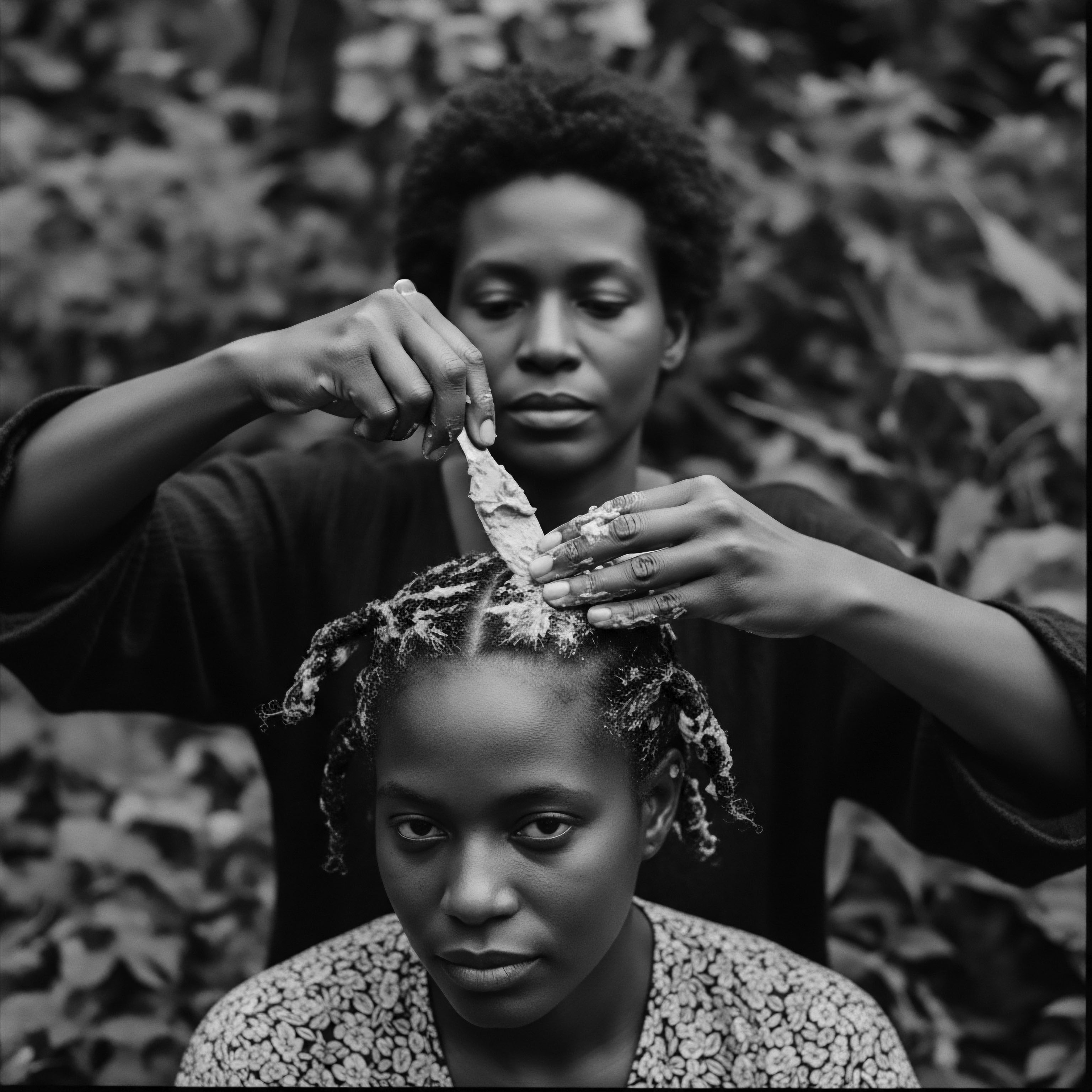
Reflection
The exploration of how ancient cultures cleaned textured hair ultimately leads us to a quiet realization ❉ the soul of a strand carries within it not just its biological blueprint, but the whispers of generations. Our textured hair is a living, breathing archive, holding stories of resilience, creativity, and deep ancestral wisdom. The cleansing rituals of antiquity were never merely about hygiene; they were acts of reverence, community, and self-definition. They speak to a time when humans lived in profound synchronicity with nature, trusting the earth to provide for their every need, including the nourishment and cleanliness of their crowns.
The techniques, tools, and natural ingredients our ancestors employed stand as a testament to their profound knowledge, often validating insights that modern science is only now beginning to fully grasp. This enduring heritage, spanning continents and millennia, reminds us that the beauty and vitality of textured hair are not a modern discovery. They are an ancient birthright, a legacy of innovative care that has been preserved and adapted through trials and triumphs.
When we engage in the tender care of our textured hair today, whether through a meticulously chosen co-wash or a carefully applied herbal rinse, we are not just following a regimen. We are participating in a timeless ritual, connecting to the very essence of those who came before us. We honor their resourcefulness, their respect for the natural world, and their unwavering spirit. Our strands, unbound and free, carry this rich history forward, becoming a vibrant expression of identity, an anchor to our past, and a beacon for the future.
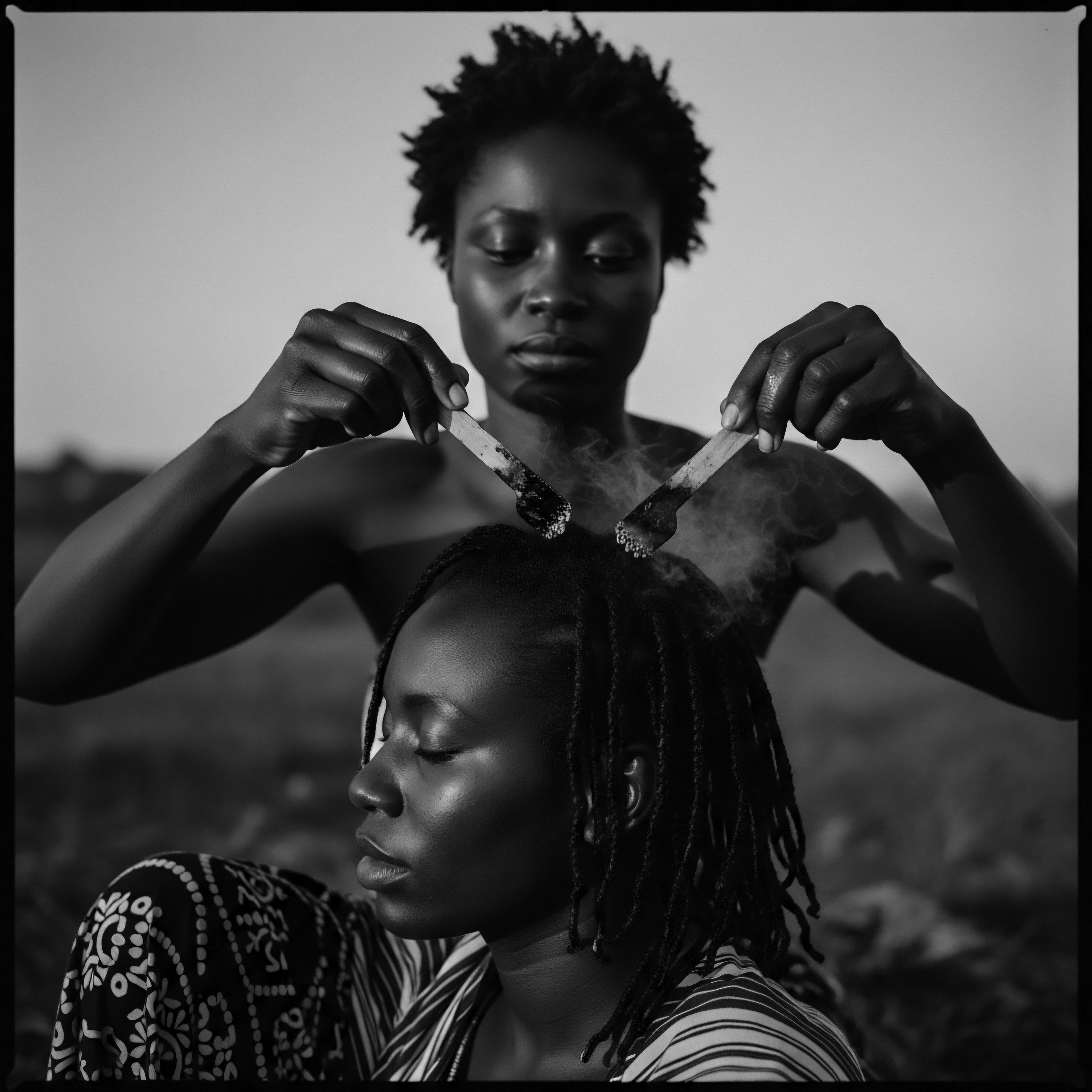
References
- Byrd, A. & Tharps, L. (2002). Hair Story ❉ Untangling the Roots of Black Hair in America. St. Martin’s Press.
- Dabiri, E. (2020). Twisted ❉ The Tangled History of Black Hair Culture. Harper Perennial.
- Wong, N. Williams, K. Tolliver, S. & Potts, G. (2025). Historical Perspectives on Hair Care and Common Styling Practices in Black Women. Cutis, 115(3), 95-99.
- Cox, P. A. Balick, M. J. & Penna, V. (n.d.). Ethnobotany and Beauty Care. Nu Skin.
- Prabhu, S. et al. (2021). Cosmetic Ethnobotany Used by Tribal Women in Epe Communities of Lagos State, Nigeria. Juniper Publishers.
- Marlowe, R. (2024). Getting To The Root of Hair Cleansing. Natureofthings.
- Ayur, 22. (n.d.). The Ancient Natural Ways of Hair Care Across Continents. 22 Ayur.
- Rthvi. (2024). Exploring Ancient Hair Care Rituals ❉ Timeless Practices for Modern Hair Wellness. Rthvi.
- Regirl. (2021). 7 Simple Ways To Wash Your Natural Hair Without Shampoo. Regirl.
- EcoFreax. (2023). African Black Soap ❉ The Natural Wonder for Skin and Hair. EcoFreax.
- Africa Imports. (n.d.). Traditional African Secrets For Long And Healthy Hair. Africa Imports.
- Visualistan. (2014). History of Hair Care in Ancient Egypt. Visualistan.
- Blam UK CIC. (2022). The History of Black Hair. Blam UK CIC.
- University of Salford Students’ Union. (2024). The Remarkable History Behind Black Hairstyles. University of Salford Students’ Union.
- Happi. (2021). Hair Care Is a Focus in Africa. Happi.
